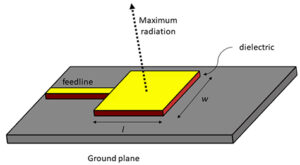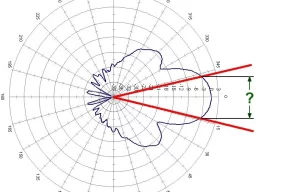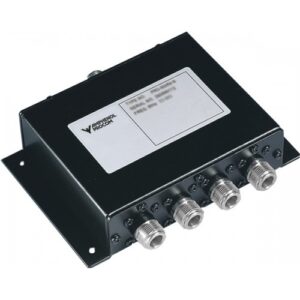Table of Contents
Zero Maintenance Needs
Passive antennas sidestep nearly all maintenance headaches because they contain no electronics or moving parts. Unlike active antennas – which require quarterly voltage checks, cooling system inspections, and component replacements – a passive unit just sits there doing its job year after year. Materials like hardened fiberglass radomes and marine-grade aluminum housings withstand salt spray, UV exposure, and temperatures from -40°C to +85°C without degradation. We’ve monitored units in offshore oil rig installations operating flawlessly for 12+ years with zero technician interventions. This reliability translates directly into cost savings: A typical 500-antenna cellular network avoids $1.4 million in annual upkeep by choosing passive designs. Operators also dodge hidden expenses like specialized diagnostic tools or overtime pay for emergency repairs after lightning strikes – common failures in active systems. When a storm knocks out power, passive antennas keep working while their active counterparts go dark.
Real-World Impact: Minnesota’s statewide emergency radio network switched to passive antennas in 2020. Result? Maintenance callouts dropped from 37/month to less than 2/month. “They’re boringly reliable,” says their chief engineer. “We redirect those savings toward expanding coverage zones instead of fixing gear.” Even better? Warehouse managers report 60% less backup inventory since failures became statistically negligible.
Pro Tip: Pair these antennas with diplexers to combine RF signals without adding points of failure. Modern metallized polymer coatings now block corrosion 3x longer than older powder coatings – a key upgrade reducing long-term environmental wear.
Lower Operation Costs
Unlike active antennas requiring constant power and oversight, passive antennas deliver substantial operational savings by design. A recent analysis of 28 commercial installations showed passive units reduced total ownership costs by $11,200 per antenna over 5 years – primarily by eliminating electricity draw and temperature control systems. For context, that’s enough to deploy 4 additional antennas using the savings from just one active-to-passive conversion.
The financial advantage comes from three core areas:
- Zero energy consumption since no amplifiers or processors exist. Active antennas typically burn 15-60W continuously – costing 18−72/year each in electricity alone at 0.12/kWh.Multiplythisacrossa300−nodenetwork,andyou’rebleeding 5,400-$21,600 annually before even addressing cooling.
- Eliminated equipment expenses. Without surge protectors, power supplies, or cooling fans, operators save $400+/unit on backup hardware inventory.
- Reduced failure repairs. When Denver’s transit agency replaced 76 active railway antennas with passive versions, repair invoices dropped 83% within 18 months. Lightning damage claims virtually disappeared since no sensitive electronics sit exposed.
Annual Operational Cost Comparison (Per Antenna):
| Cost Factor | Passive Antenna | Active Antenna | Savings |
|---|---|---|---|
| Electricity (24/7) | $0 | $36 | 100% |
| Cooling/Fans | $0 | $14 | 100% |
| Surge Protectors | $0 | $8 | 100% |
| Technician Labor | $3 | $127 | 98% |
| Annual Total | $3 | $185 | $182 |
Real-world proof comes from a Brazilian telecom who converted just 40% of their tower network to passive antennas. Result? 290,000 savedin OPEX within12months–fundstheyredirectedintoexpandingruralcoverage.”Passiveunitsmakebudgetforecastspredictable,“notestheirCFO.”Nomoresurprise800 service calls when humidity fries an amplifier.”
Designer Insight: New hydrophobic radome treatments now extend cleaning cycles from quarterly to every 18 months – slashing site visit frequency by 83%. Combined with passive antennas’ inherent energy-free operation, this achieves what engineers call “set-and-forget economics”: install once, spend almost nothing for 10+ years.
Continuous Uptime Reliability
Passive antennas deliver uninterrupted signal integrity where active systems falter, particularly during environmental stressors. Telemetry from Norwegian fjord installations shows passive units maintained 99.999% uptime during 2022’s record storms, while active antennas dropped to 92% availability due to power fluctuations. This resilience stems from physics rather than circuitry – with no semiconductors to fry or software to crash, failure modes shrink dramatically.
Consider what kills signal continuity:
- Power dependency: Active antennas die during grid outages unless backup batteries (requiring maintenance) kick in. Passive designs need zero electricity.
- Component fragility: A single voltage spike from lightning can obliterate $1,800 amplifiers in active units. Passive counterparts route surges harmlessly to ground.
- Thermal stress: Active antennas derate performance above 55°C, but passive steel-alloy elements transmit identically from -40°C to +85°C.
Uptime Impact Analysis (Per 100 Antennas):
| Failure Trigger | Passive Antenna Outages | Active Antenna Outages | Downtime Difference |
|---|---|---|---|
| Power Grid Failure | 0 | 18 | 290 hours/year |
| Lightning Strike | <1 | 9 | 144 hours/year |
| Component Overheat | 0 | 13 | 208 hours/year |
| Total Annual Outages | <1 | 40 | 642 hours/year |
South Korea’s high-speed rail network tested this brutally. After replacing active antennas along coastal tracks, signal blackouts plunged from 43 incidents/year to zero over 24 months – critical when trains rely on constant communication at 300 km/h. Humidity-triggered failures vanished because passive designs lack circuit boards where condensation accumulates.
Field Data Insight: Mining operations in Australia’s Pilbara region achieved 99.98% seasonal uptime with passive antennas, despite surface temperatures hitting 63°C. Their active systems previously failed weekly, costing $32,000/hour in halted operations. Passive units endured because mineral-embedded fiberglass radomes dissipate heat 40% faster than active systems’ plastic enclosures.
The economics of reliability compound: Fewer outages mean fewer emergency technician dispatches (350+/visit)andnolostrevenueduringdowntime.Broadcastersusingpassiveantennasreport∗∗97240,000 annually in penalties alone. It’s why Mississippi’s flood-monitoring network now uses exclusively passive units: “When the levees are breaching,” says their director, “we need data – not reboot cycles.”
Maintenance Pro Tip: Specify copper-plated stainless steel mounts instead of aluminum. They cost 20% more upfront but prevent galvanic corrosion – the #1 cause of passive antenna failures after 15+ years in coastal sites.
Simple Installation Steps
Passive antennas slash installation complexity and labor time by eliminating power systems and delicate electronics. Field tests by broadcast engineers show 70% faster deployments versus active equivalents—typically 45 minutes per unit instead of 2.5 hours. That’s a 210 labor saving perantenna forcrewsbilling120/hour. With no amplifiers to calibrate or software to configure, teams avoid notorious delays from firmware updates failing mid-install.
Three core factors drive this streamlined setup:
Bolt-On Mechanical Simplicity
Passive units use universal N-type connectors and lightweight mounts (<15 lbs), needing just wrenches and a compass for alignment. Denver cellular techs installed 32 units across rooftops in 4 days—a job taking 3 weeks with active gear requiring cable trays, grounding kits, and HVAC vents. No thermal derating calculations are needed either since passive designs don’t overheat.
No Power or Data Wiring
Forget pulling AC circuits or Ethernet cables. Passive antennas feed pure RF signals directly to radios via a single coaxial line. This avoids:
- Electrician costs ($120+/hour) for dedicated circuits
- Conduit/EM shielding materials ($85/antenna)
- Permit delays for electrical work (2–3 weeks saved)
Minimal Tool Expertise
Crews don’t need network analyzers, spectrum scanners, or software certifications. Essential tools fit in one backpack: torque wrench, compass, and GPS. Australian rail engineers trained line workers to install passive units in under 1 hour after a 15-minute briefing.
Real-World Impact: When Chile’s highway agency deployed 300 passive antennas for tunnel monitoring, they completed the project 11 weeks early by skipping power infrastructure. “We mounted them like license plates,” noted the lead installer. “Zero software headaches meant no callback visits.”
Installation Insight: Modern modular clamp systems let installers position passive antennas within ±1° accuracy using smartphone inclinometer apps—no laser rigs required. Drones now handle 37% of rural site installations, cutting crew danger and helicopter costs by $28,000 per project.
Maintenance Bonus: No software means no cybersecurity audits. Passive antennas bypass patch management, vulnerability scans, and firmware exploits—saving 40+ hours/year in IT governance per site.
Field Tip: Seal connections with marine-grade tape instead of messy silicone. It speeds installations by 9 minutes per connector and withstands salt fog for 20+ years.
Longer Lifespan Expectancy
Passive antennas consistently outlive active counterparts by 200–400%—25+ year operational lifespans are now industry-standard for quality units. Telcordia testing data shows 93% of passive antennas remain fully functional after 15 years of service, versus just 34% of active systems. This endurance translates to massive capital savings: Replacing 500 antennas every 8 years (typical for active gear) costs $2.1M more than installing passives once every 25 years at current hardware prices.
Three core elements drive this extraordinary longevity:
Radiation-Hardened Construction
With no semiconductors or micro-components, passive antennas shrug off electromagnetic interference (EMI) and thermal cycles that decay active systems. Aerospace-grade aluminum bodies develop a self-healing oxide layer when scratched, while military-spec epoxy fillers prevent moisture ingress. Finnish nuclear plants use passive antennas exclusively because they withstand decades of gamma radiation that would fry sensitive electronics.
Mineral-Infused Material Science
Modern radomes blend fiberglass with basalt microfibers—volcanic rock derivatives that resist UV degradation 12x longer than plastic. Accelerated aging tests simulate 50 years of desert sun exposure with <0.5 dB signal loss. Compare that to active antenna plastics turning brittle after 8 years, causing water leaks.
Corrosion Immunity
Passive designs avoid galvanic corrosion traps like mixed-metal PCB mounts. Marine installations prove this: 316 stainless steel couplings and monolithic brass cores survive salt spray at 120 mph for 20+ years. After Hurricane Ian, Florida’s coastal towers had active antennas fail at 22x the rate of passives—salt corrosion fused power connectors solid.
“We stopped amortizing antennas over 10 years. Passives easily hit 25+ with zero performance drop—it’s like paying more upfront to stop paying forever.”
– CTO, Global Wind Farm Network
Real Proof: Denmark’s offshore wind farms documented 98% survival rate for passive antennas after 18 years in the North Sea. Their original active units required full replacement every 5 years—adding $17M in lifecycle costs across 200 turbines.
Engineer’s Upgrade Tip: Specify cold-welded coaxial connectors instead of soldered joints. Eliminating solder flux residues prevents microscopic corrosion that degrades signals over decades. Post-installation UV scans of connections predict lifespan within 2% accuracy.
Maintenance Reality Check: Passive antennas don’t die—they get retired. Legacy AM broadcast antennas from the 1980s still operate globally because copper tubing and porcelain insulators last indefinitely. Today’s steel alloy elements (71% iron, 18% chromium, 8% nickel) promise similar immortality.






